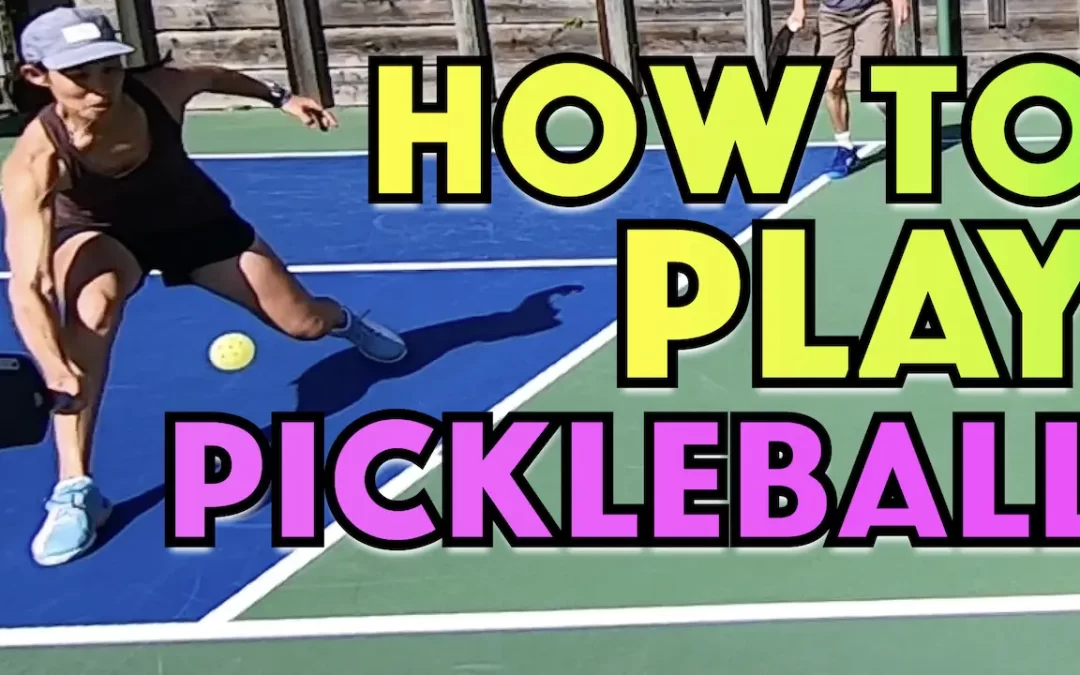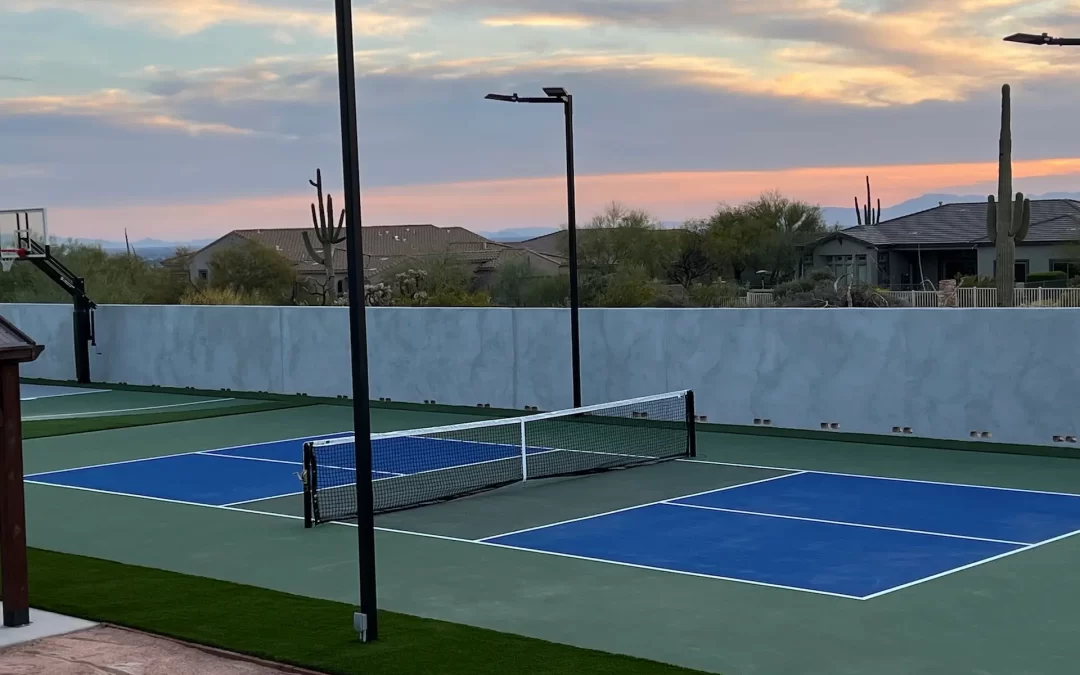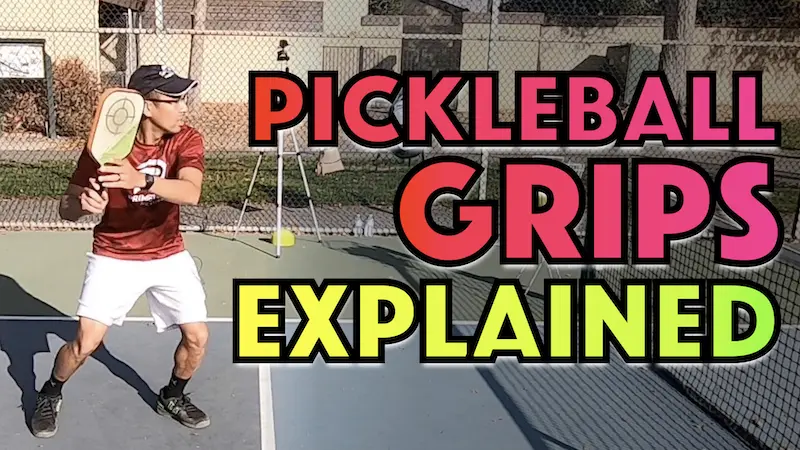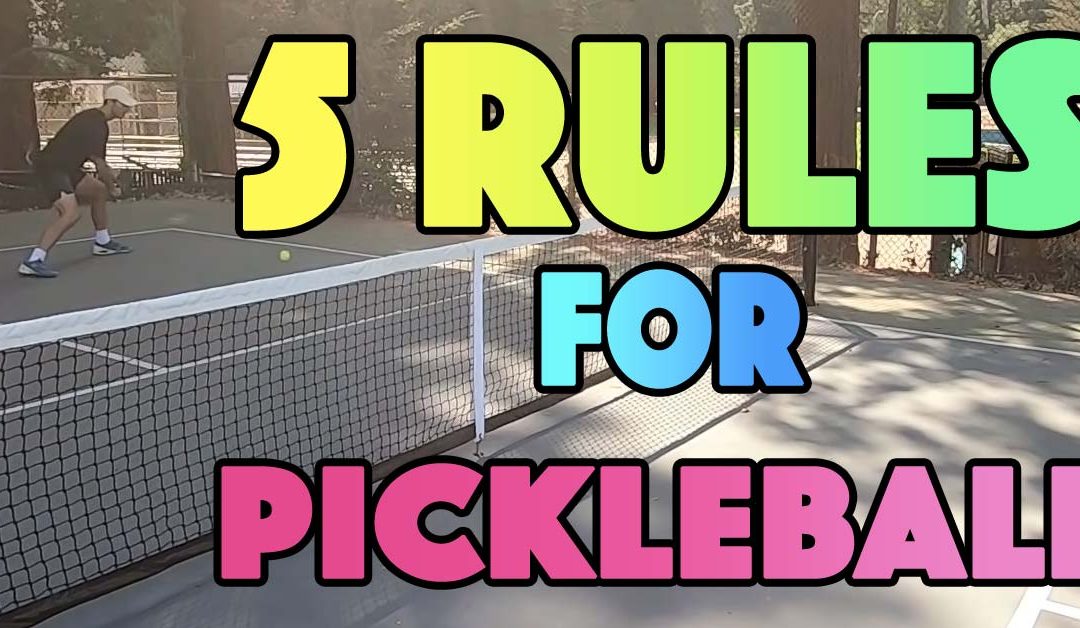Figuring out who serves first in pickleball is easy if you know just a few key concepts and follow a few service sequence rules.
And keeping track of who should be serving or receiving as well as what the score is, will be a lot easier to do if you start properly.
Here are the rules and the logic behind who should serve and score points in pickleball.
So, Who Serves First in Pickleball
You can use any fair method of determining which player (in singles) or team (in doubles) has first choice of end, serve, or return of serve (rocks/paper/scissors, closest to a number, coin flip, etc.). The winner can determine whether to serve first or defer to their opponent.
The player who serves first in a pickleball game, does so from the right-hand side of the court. This is true for playing doubles and singles games.
In doubles, you generally want the stronger server to serve first so that you have the best chance of scoring points right away.
The ball is served to the other end of the court, and must land in the diagonal service box, which is the area between the non-volley zone line and the baseline before being returned back over the net.
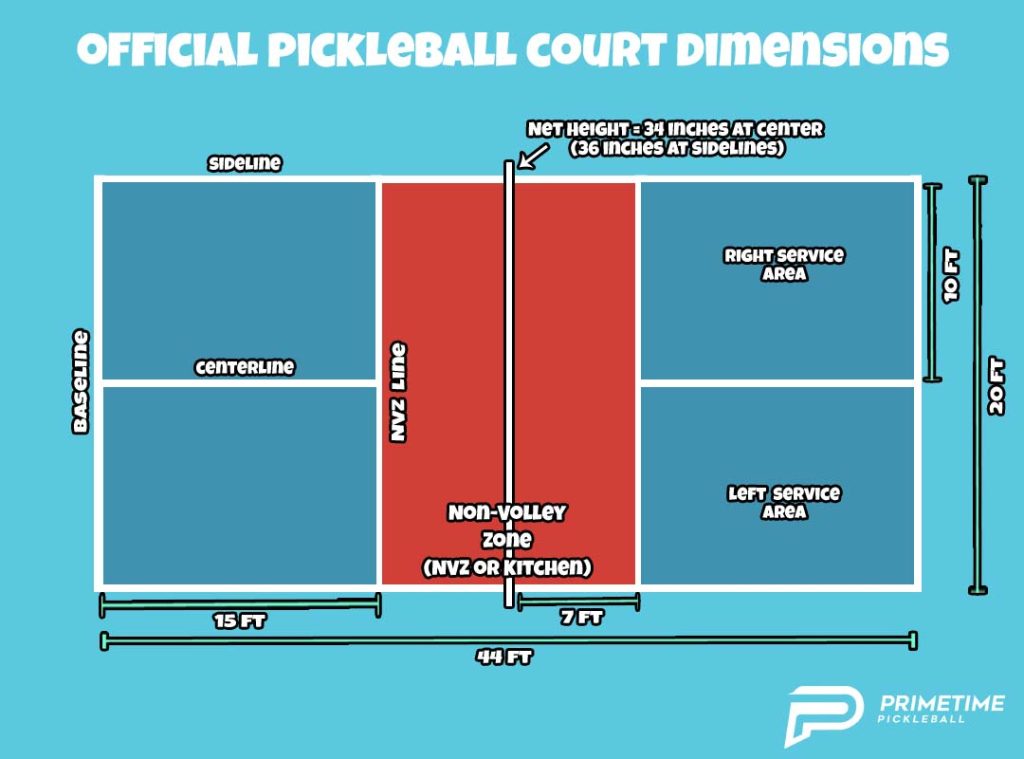
Your opponent (the returner) must then return the ball over the net for the point to continue. They can return anywhere on the serving team’s side of the court. If you win the point, you serve the next ball from the left-hand side of the court.
On a first server’s turn in doubles, if the serving team wins, the same player continues to serve from the other side of the court and continues to alternate from right to left as they win each point as long as they continue to win each point.
But, once the returning team wins a point that the first server initiated, the ball is given to the second player on the serving team. (with one exception as described in here under the “First Server Exception Rule” section)
The second player then continues to serve, changing sides after each winning point, until the serve is lost and the ball is passed to the opposing team.
Change of Service
If the serving team has just lost their turn to serve, the service changes to the opposing team and they serve from the right-hand court.
And the same rules apply to the team that has just become the serving team.
Each time they win a point, the server changes sides, either from left to right or right to left and the server’s partner also switches sides. So they are constantly alternating sides as long as they keep winning points. That’s always true when you are the serving team.
In contrast, the receiving team does not exchange sides after their opponents have won a point. They each stay on the same side of the court until they become the serving team.
In a nutshell: The server continues to change sides each time he or she wins a point. Once they (or in doubles if the second server) lose a point , the opposing team receives the service, and they then serve, starting from the right-hand side. Only when the second server has also had their turn to serve and loses a point as the server does the ball go back over to the other team once again.
Basic Pickleball Rules For Scoring
Only the team that is serving can score points.
This means that the receiving player (in singles) or team (in doubles) must win a rally to “win the right” to serve. It is only then that they can actually begin to win points that get reflected in the score of the game.
In doubles, they need to win at least two rallies in order to win back their turn to serve since each server gets at least one turn to serve.
Many points in a pickleball game are played that don’t end up moving the needle on the scoreboard. It all depends upon the competitiveness of a game and how evenly (or not) two teams stack up against each other.
Two evenly matched teams may alternate between being the serving team and the receiving team several times without scoring many points. This happens when the receiving team (regardless of which team it is) wins the point often. This tends to happen more often with evenly matched teams.
In games where the skill level is lopsided and one team is significantly stronger than the other, that team can often end up winning a lot of points on serve which in turn puts a lot of points on the scoreboard and thus ends the game sooner rather than later.
Pickleball Scoring
The object of the game of pickleball is to reach either 11, 15, or 21 points before your opponent.
The score that you need to reach depends on the format of the tournament in which you are playing. It’s up to the tournament director. They may be operating with time constraints or court availability constraints that work better in a particular format.
More often than not, the format is usually a game to 11 points in recreational play.
Often, full pickleball matches are played that you need to win two out of three games to 11 points in order to win the match up and move on to the next round. Sometimes you may need to win three out of five games to win the match up.
It all depends on the context of the recreational game or the tournament. Just know that there can be multiple formats.
Games are won by a margin of two points, so if you reach 11 points while your opponent is on 10 points, you will either have to score an additional point to make the game 12-10 or continue playing until the margin is 2 between you and your opponent.
How Points Are Won Or Lost In Pickleball
An exchange is won when the opposing team commits a fault. As previously mentioned, you may win the exchange put not win a point. You only win a point when the opposing team commits a fault AND you are the serving team.
Faults can be committed in several ways. Here is a list of the most common ones:
- The ball touches any part of the non-volley zone on a service.
- The ball is hit out of bounds.
- The ball hits the net and fails to clear it.
- A player violates the non-volley zone rule (Is standing in the non-volley zone or steps into the non-volley zone during a volley or their momentum carries them into the non-volley zone after hitting a volley).
- A player violates the two bounce. (see details below)
- The wrong person serves (the serving team gets mixed up about who’s turn it is to serve and/or from what side to serve).
- The wrong person receives (the receiving team gets mixed up about who’s turn it is to receive).
The two-bounce rule requires that the serve bounce on the receiver’s side of the court and that the return bounce on the server’s side of the court for the rule to be satisfied on any particular point.
Generally it’s the serving team that is in the most danger of violating this rule since they are responsible for the second bounce. Many player’s accidentally get excited and come running in after they hit a serve and hit the 3rd shot of a point as a volley which violates the two bounce and is a fault committed by their team
The Scoring Call-Out Explained
Singles scoring is relatively straightforward. The server calls out their score and then their opponents score. Nothing more to it.
Doubles is where things get a little tricky and it requires more explanation.
At the very beginning of a game before any play has begun, a score of 0-0-2 is called out by the server. The first 0 is for the serving team’s score, the second 0 is for the receiving team’s score, and the two means that you are on your second serve.
If the server wins the first point, the score changes to 1-0-2. If the server wins the second point, the score changes to 2-0-2. If the server then loses a point, the serve goes over to the other team and a score of 0-2-1 is called out be the first server on that team.
This is because the receiving team has become the serving team. The first two numbers get flipped in the sequence because they call out their score first and the serving team’s score second. and as they are on their first serve, the final figure in the three-figure sequence becomes one because they are now the first server.
>> Click here for a more detailed explanation of how to score in pickleball. <<
6 Tips For Serving In Pickleball
Serving is arguably one of the most important parts of a pickleball game.
On each pickleball point, you only get one opportunity to serve the ball successfully. If you miss, that’s it, the point is over and the returning team did nothing to earn that point.
In singles, your opponent now get’s to serve. In doubles, you’ve also lost that opportunity to score points on your serve putting more pressure on your partner’s serve or simply handing over the right to serve to the other team if you are the second server.
When you can serve effectively, you set yourself up well for the rest of the exchange and the game. You can place your opponent in a difficult position as they return making easier third shots for you. That’s the goal!
If you are generally very effective on your serve then missing one from time to time doesn’t matter but if serving is a weakness for you that’s definitely something you’ll want to work on sooner rather than later.
Here are a few serving tips to improve your pickleball games.
1. Picking Your Target
It’s important to pick a particular spot on the court where you are aiming to place the ball. This helps to focus your attention and increases your likelihood for success.
From behind the baseline, most players have a more powerful forehand compared to their backhand. If you can target the area of the court that places the ball on your opponent’s backhand, you will typically have at least a slight advantage.
If you are new to pickleball, then you should aim for the middle of your opponent’s receiving area and, as your skill improves, you should aim to hit the ball deeper and closer to the baseline.
When you can aim very well, you can send a few to the corners and force your opponent to play the ball more out of position. This gives you greater opportunities to advance to the non-volley line.
No need to get to crazy and go for big risks on your serve. There are very few aces in pickleball. The likelihood of the return coming back is high against skilled opponents. Your goal is simply to make them as uncomfortable as possible while they return.
2. Progression To Eastern Grip From Continental
When you are just starting to learn the game, you’ll want to use a continental grip on the serve. Using this grip means that you don’t have to worry about changing your hand placement on each shot.
Once you advance in skill and are looking to add more powerful shots to your arsenal, you’ll want to strongly consider using an eastern forehand grip on your serve.
3. Swing With Your Whole Body
Players who are new to pickleball tend to under-hit the ball, using only their wrist and elbow on each serve. This results in very softly hit balls that are easy for opponents to return.
For the best results, position your body facing the side of the court and use your whole body to serve. Keep your legs bent, twist at the waist and swing through with your shoulder and arm. This will prevent injuries to your wrist and elbow tendons and provide more power and accuracy with each serve.
Remember that the ball must be hit from below your waist height with the paddle moving in an upward direction, otherwise, you could incur a fault.
4. Margin of Error
No matter how good you are as a pickleball player, mistakes do happen. It’s therefore a good idea to make sure that you aim for a point at least a couple of feet from the baseline and the sideline so that you have a margin for error.
Remember, aces are tough to come by in pickleball so there’s no need to play it too close to the line.
5. Mix Up Your Serves
While consistency is an important component in getting the best from your service, it’s important that you do not become predictable.
By varying the speed, position, and spin on your serves, you keep your opponent guessing and maximize the chances of winning a point.
Training your consistency while still being able to hit with variety is what the best players are able to do. It’s something to strive for if it’s not something you can yet do.
6. How to Improve Your Serve
To improve your service, it is important to practice often. This is especially true if you have purchased a new paddle, are new to the game or find that you can’t rely on your serve as much as you would like.
If you only have one ball (or no more than a few balls), one of the best ways to practice your serve is against a wall. Get some tape and mark out a box on the wall, two feet or so above the height of the net.
You can then practice hitting the ball at that target, knowing that once you are consistently hitting the spot, you will have the necessary control to also land your serve accurately on the court.
If you have access to a basket of balls you can go straight to the court.
On the court, you should practice hitting a spot deep in your opponent’s half. This ensures that you consistently hit the ball in the same way, each time.
After you have become adept at placing the ball in the area of the court that you want, you can try alternate your shots by going for different targets or imparting topspin or additional power to confuse your opponent.
Final Thoughts
Serving in pickleball is a lot of fun. If you are the server, you definitely know you will get a chance to hit the ball during the point because you are the one to open the point with your strike of the serve.
It’s especially fun if you know you have a strong serve and are going to be able to open the point strong with your big, reliable serve.
If that’s now how you feel about your serve then get out there and work on it because having a good and consistent serve is a skill most good players have in their back pocket. You’ll want one too if you want to compete at advanced levels of play.

